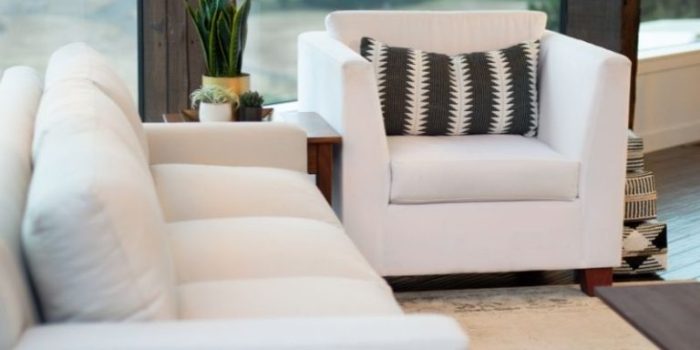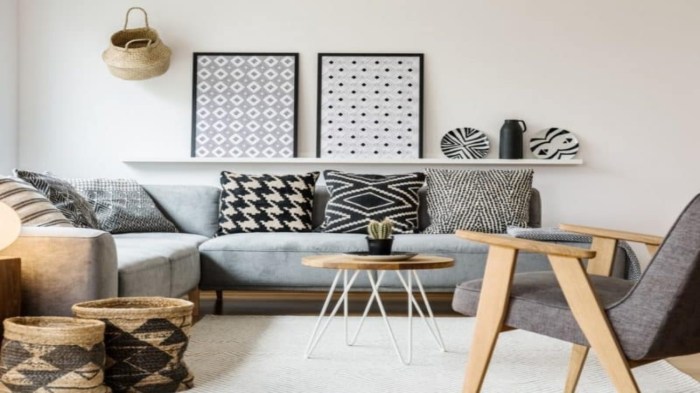Sustainable Materials Reshape Furniture Innovation, a transformative movement, is reshaping the furniture industry. It’s a compelling shift driven by growing environmental awareness and consumer demand for eco-friendly products. This change encompasses everything from sourcing materials to manufacturing processes, and the resulting designs offer both sustainability and aesthetic appeal.
The transition to sustainable materials is not just about using eco-friendly alternatives; it’s about optimizing the entire furniture lifecycle. From the trees we harvest to the end-of-life disposal, each stage plays a role. This evolution involves exploring innovative manufacturing techniques and designs that prioritize durability, repairability, and a reduced environmental footprint.
Introduction to Sustainable Materials

Source: savvyrest.com
Sustainable materials in furniture design prioritize environmental responsibility and social equity. This involves selecting materials with minimal environmental impact throughout their lifecycle, from extraction to disposal. The focus is on reducing waste, conserving resources, and minimizing harmful emissions. This shift reflects growing consumer awareness and a global commitment to a more environmentally conscious future.Sustainable materials offer a compelling alternative to traditional, often unsustainable, materials used in furniture production.
They provide a pathway towards a more responsible and eco-friendly furniture industry. The transition towards sustainability isn’t just about choosing new materials, but about a fundamental change in how furniture is designed, manufactured, and consumed.
Examples of Sustainable Materials
A range of materials are gaining prominence in furniture design, each with unique characteristics and origins. Recycled materials, like reclaimed wood or plastic bottles repurposed into fibers, exemplify this commitment. Bamboo, known for its rapid growth and strength, is another increasingly popular option. Natural fibers like linen and hemp, derived from readily renewable resources, provide both aesthetic appeal and sustainability.
Innovative materials, like mycelium-based composites, offer intriguing possibilities for sustainable alternatives to traditional wood products. These diverse materials showcase the creativity and ingenuity in finding eco-friendly replacements for conventional materials.
Environmental Impact of Traditional Materials
Traditional furniture materials often have a significant environmental footprint. For instance, the deforestation associated with unsustainable logging practices impacts biodiversity and contributes to carbon emissions. Materials like plywood, particleboard, and veneer, often sourced from non-sustainable forests, contribute to the environmental consequences of conventional furniture production. The manufacturing processes for these materials can also generate substantial pollution. Conversely, sustainable alternatives, when sourced and processed responsibly, offer a way to reduce these impacts.
Benefits of Sustainable Materials
Using sustainable materials in furniture production offers a multitude of benefits. Reduced reliance on finite resources is paramount, ensuring long-term availability for future generations. The decreased environmental impact of the manufacturing process translates to lower carbon emissions and a reduced strain on natural ecosystems. Furthermore, sustainable practices often contribute to the preservation of biodiversity and support local communities.
The choice of sustainable materials fosters a more responsible and ethical approach to furniture production.
Sustainability Comparison of Wood Types
| Wood Type | Sustainability Rating | Origin | Characteristics |
|---|---|---|---|
| Sustainably Harvested Redwood | High | Managed forests, typically with replanting | Known for strength and durability, often with a rich reddish-brown hue. |
| Unsustainably Harvested Mahogany | Low | Often from old-growth forests | Beautiful reddish-brown wood, highly sought after but often harvested unsustainably. |
| Bamboo | High | Rapidly growing grass | Lightweight, strong, and renewable. Requires less water and fertilizer compared to traditional hardwoods. |
| Plywood (Sustainable Source) | Moderate | Managed forests with sustainable harvesting practices | Made from layers of wood, offering strength and affordability. Sustainability depends on the origin of the wood. |
| Plywood (Non-Sustainable Source) | Low | Deforested regions | Similar properties to sustainably sourced plywood, but with a higher environmental impact due to unsustainable logging. |
This table provides a comparative overview of the sustainability of various wood types, highlighting the difference between sustainably harvested and non-sustainable sources. The choice of wood significantly impacts the environmental footprint of the furniture piece.
Innovation in Manufacturing Processes: Sustainable Materials Reshape Furniture Innovation

Source: shopify.com
Innovative manufacturing processes are crucial for realizing the full potential of sustainable furniture design. They allow for the efficient and environmentally conscious production of furniture using sustainable materials, reducing waste and minimizing the overall environmental footprint. This section explores the critical role of advanced manufacturing techniques, including 3D printing, in shaping the future of sustainable furniture.Manufacturing processes directly influence the environmental impact of furniture.
By embracing innovative methods, manufacturers can significantly reduce resource consumption, energy use, and waste generation throughout the entire production cycle. This approach extends beyond the choice of materials to encompass the entire production workflow.
Impact of 3D Printing
D printing, a rapidly evolving technology, offers substantial opportunities for sustainable furniture production. Its ability to create complex geometries and intricate designs using a wide range of materials opens new possibilities for personalized and customized furniture. The reduced material waste inherent in 3D printing compared to traditional manufacturing methods makes it an attractive option for environmentally conscious furniture production.
The potential for on-demand production further reduces transportation needs and inventory holding costs. This technology is already being explored in the production of furniture components, allowing for the use of smaller, more precise parts, and optimized material use.
Advanced Manufacturing Techniques
Beyond 3D printing, other advanced manufacturing techniques play a vital role in sustainable furniture production. Laser cutting and CNC machining, for instance, allow for precise material use and reduced waste. These technologies are well-suited for creating intricate patterns and shapes, and are often employed to produce components from sustainable wood or composite materials.
Scaling Up Sustainable Furniture Manufacturing
Scaling up sustainable furniture manufacturing presents both challenges and opportunities. One key challenge is ensuring that these innovative processes are economically viable for businesses of all sizes. The initial investment in new equipment and training can be significant. However, there are opportunities to leverage government incentives and funding programs to support the adoption of sustainable manufacturing practices.
Collaboration between manufacturers, designers, and material suppliers is essential for developing efficient supply chains and promoting the adoption of sustainable materials. The use of recycled materials and the design for disassembly are key components of this approach.
Circular Economy Models
Circular economy models offer a powerful approach to sustainable furniture production. Designing furniture for disassembly and reuse, or creating modular designs that allow for easy component replacement or upgrading, can extend the lifespan of furniture and reduce the need for new production. By implementing take-back programs and repurposing existing materials, furniture manufacturers can contribute to a closed-loop system, minimizing waste and maximizing resource efficiency.
Successful examples of this approach include modular furniture systems that allow for component replacement, or furniture designs with easily detachable parts, maximizing reuse potential.
Manufacturing Techniques and Environmental Impact, Sustainable Materials Reshape Furniture Innovation
| Manufacturing Technique | Description | Environmental Impact |
|---|---|---|
| 3D Printing (Selective Laser Sintering) | Creating objects layer by layer using a laser and powder material. | Lower material waste, potentially high energy consumption depending on the material used. |
| Laser Cutting | Using a laser to cut shapes from sheets of material. | Low material waste, depending on material and design, but can consume significant energy. |
| CNC Machining | Using computer-controlled tools to shape and cut material. | High precision, but can generate waste and require energy. |
| Traditional Woodworking | Handcrafting furniture using traditional tools and techniques. | Potentially lower energy consumption than other techniques but can have higher material waste and emissions depending on the wood source. |
Design Considerations for Sustainable Furniture
Sustainable furniture design transcends mere aesthetics; it encompasses a holistic approach prioritizing environmental impact and human well-being. This involves mindful material selection, manufacturing processes, and design choices that maximize the lifespan and minimize the environmental footprint of the furniture. Ultimately, sustainable furniture design strives for both beauty and longevity.Design choices profoundly influence the sustainability of furniture. The materials selected, the manufacturing processes employed, and the design itself dictate the environmental impact and the product’s lifespan.
Careful consideration of these factors is critical to achieving true sustainability.
Material Selection and Durability
Choosing sustainable materials is paramount in sustainable furniture design. The selection of materials should prioritize renewable resources, recycled content, and low-impact manufacturing processes. Examples include using reclaimed wood, bamboo, or recycled plastics. Understanding the environmental impact of each material is crucial. Furthermore, selecting materials with inherent durability ensures the furniture can withstand everyday use, reducing the need for frequent replacements.
Durable materials contribute significantly to the overall lifespan of the product. This translates into reduced waste and resource consumption.
Longevity and Lifespan Enhancement
Longevity in furniture design is directly tied to durability and repairability. Designing furniture for longevity means creating products that can withstand wear and tear, extending their usable lifespan. Modular designs and adaptable furniture pieces offer further enhancement to the lifespan. This allows for upgrades, replacements of individual components, and even repurposing into new configurations, reducing the need for complete replacements.
By incorporating repairability into the design, furniture can be easily repaired and maintained, thereby extending its useful life.
Design Aesthetics and Sustainable Materials
Sustainable furniture does not have to sacrifice style. Various design aesthetics can effectively incorporate sustainable materials. For example, Scandinavian design principles often embrace natural materials like wood and emphasize clean lines, which seamlessly integrate with sustainable practices. Industrial-chic styles can also leverage reclaimed materials, such as metal or wood, adding a unique character to the furniture. The key is to integrate sustainability into the design without compromising on visual appeal or functionality.
Modularity and Adaptability
Modularity and adaptability are vital elements in extending the lifespan of furniture. Modular furniture allows for rearrangement, updates, and even repurposing of components. This adaptability can be seen in various furniture types, such as shelving units or modular sofas. This reduces the need for complete replacements, thereby minimizing waste and resource consumption.
Examples of Durable and Repairable Designs
Examples of furniture emphasizing durability and repairability include furniture with easily replaceable parts or designs that utilize robust materials and construction techniques. A table with a detachable top that can be replaced or repaired, or a sofa with removable and washable covers exemplify this approach. These designs prioritize longevity and minimize the environmental impact associated with frequent replacements.
Key Design Considerations for Sustainable Furniture
| Category | Considerations |
|---|---|
| Material Choices | Prioritize renewable resources, recycled content, and low-impact materials. Consider the environmental footprint of each material. |
| Manufacturing Processes | Employ sustainable manufacturing techniques, minimize waste, and use energy-efficient processes. |
| Aesthetics | Incorporate sustainable materials without compromising on style. Explore design aesthetics that harmonize with sustainability. |
| Durability | Design furniture to withstand everyday use, extending its lifespan. |
| Modularity | Design furniture with modular components to allow for upgrades, replacements, and repurposing. |
| Repairability | Incorporate designs that allow for easy repair and maintenance of individual components. |
Consumer Perception and Market Trends

Source: shopify.com
Consumers are increasingly seeking furniture that aligns with their values, and sustainability is a key driver in this shift. They are not just purchasing items; they are expressing their commitment to environmental responsibility and social consciousness through their choices. This burgeoning awareness is creating a significant market opportunity for sustainable furniture.
Consumer Preferences for Sustainable Furniture
Consumers exhibit a growing preference for sustainable furniture, driven by a desire for environmentally friendly products and ethical sourcing. They prioritize materials like reclaimed wood, bamboo, and recycled plastics, recognizing the positive environmental impact of these options. Beyond material sourcing, consumers are also drawn to furniture constructed with sustainable manufacturing processes, highlighting the importance of the entire lifecycle of the product.
This extends to the furniture’s durability and longevity, as consumers seek products that will last for many years, reducing the need for frequent replacements and minimizing waste.
Growing Market Demand for Environmentally Conscious Furniture
The market demand for environmentally conscious furniture is experiencing substantial growth. This surge is fueled by increased consumer awareness of environmental issues and a desire to minimize their ecological footprint. The trend is particularly strong among younger demographics, who are highly engaged with sustainability issues and actively seek out brands that align with their values. This is evident in growing sales figures for sustainable furniture brands and the increasing number of dedicated sustainable furniture retailers.
Numerous studies reveal that a significant portion of consumers are willing to pay a premium for sustainably produced furniture.
Role of Pricing and Accessibility in Driving Adoption
Pricing and accessibility play a crucial role in driving the adoption of sustainable furniture. While some sustainable materials and manufacturing processes may initially command a higher price tag compared to conventional options, this premium can be justified by the long-term value and reduced environmental impact. As production volumes increase and manufacturing processes become more efficient, prices for sustainable furniture are expected to become more competitive.
Furthermore, government incentives and policies promoting sustainable practices can contribute to wider accessibility and affordability. This includes tax breaks for eco-friendly materials and manufacturing processes, subsidies for consumers purchasing sustainable furniture, and accessible financing options.
Marketing Strategies Highlighting Sustainability
Effective marketing strategies for sustainable furniture should clearly communicate the product’s environmental credentials. This includes highlighting the specific sustainable materials used, the responsible manufacturing processes, and the positive impact on the environment. Transparency in the supply chain and clear communication about the environmental footprint are crucial. Brands can leverage visual storytelling, showcasing the entire journey of the product from sourcing to manufacturing to final delivery, to resonate with consumers seeking authenticity.
Using certifications and labels that verify the sustainability of the product is another powerful approach. Eco-labels and certifications demonstrate compliance with environmental standards, building trust and confidence among consumers.
Future Market Trends for Sustainable Furniture
Future market trends for sustainable furniture will likely see a continued emphasis on innovative materials, circular economy models, and personalized design solutions. The development of new bio-based materials, and advancements in recycling and upcycling technologies, will drive further innovation. Consumers will increasingly demand furniture that integrates seamlessly into their lifestyle, reflecting personalized design needs while prioritizing sustainability. The rise of modular and customizable furniture designs, allowing for flexibility and adaptability, will be key to future growth.
This will support the concept of extended product lifespans and reduced waste.
Summary Table: Consumer Preferences and Market Trends
| Category | Description |
|---|---|
| Consumer Preferences | Prioritize environmentally friendly materials (e.g., reclaimed wood, bamboo, recycled plastics), sustainable manufacturing processes, durability, and longevity. |
| Market Demand | Experiencing significant growth, fueled by increased consumer awareness and desire to minimize ecological footprints. Younger demographics are particularly engaged. |
| Pricing & Accessibility | Initially higher prices can be justified by long-term value and reduced environmental impact. Increased production volumes and efficiency will contribute to greater affordability, and government incentives play a role. |
| Marketing Strategies | Highlight specific sustainable materials, manufacturing processes, and environmental impact. Transparency, clear communication, and certifications are key. |
| Future Trends | Emphasis on innovative materials, circular economy models, personalized designs, and modular/customizable furniture to promote extended product lifespans. |
Case Studies of Sustainable Furniture

Source: designwanted.com
Sustainable furniture is no longer a niche concept but a growing segment of the market, driven by consumer demand for eco-friendly products. Examining successful case studies provides valuable insights into the design, manufacturing, and marketing strategies that have proven effective in this evolving sector. These examples showcase how innovative approaches can lead to environmentally responsible and commercially viable furniture solutions.Successful sustainable furniture often integrates environmentally conscious materials, efficient manufacturing processes, and appealing designs that resonate with consumers.
The design process is critical, requiring a deep understanding of material properties and manufacturing techniques to create durable, aesthetically pleasing pieces that minimize environmental impact.
Examples of Successful Sustainable Furniture Designs
Several furniture companies have successfully launched sustainable products, demonstrating the feasibility of environmentally conscious design. These designs demonstrate that sustainability and aesthetics can coexist, proving the market’s willingness to support such products.
- IKEA’s MALM series: IKEA’s MALM bedroom furniture series exemplifies a strategy for mass-market sustainability. Utilizing sustainable wood sourcing and efficient production techniques, the MALM line showcases how a large-scale producer can adopt environmentally responsible practices while maintaining affordability. The series’s longevity and widespread availability demonstrate its success in reaching a broad consumer base.
- Herman Miller’s Sayl Chair: Herman Miller’s Sayl chair showcases the use of innovative, recycled materials and sustainable manufacturing. The design incorporates recycled plastic and engineered wood, reflecting a commitment to minimizing environmental impact throughout the production lifecycle. The chair’s ergonomic design and durability contribute to its appeal to a wider audience, demonstrating that sustainability doesn’t have to compromise on quality.
- Modular Furniture Systems: Many companies have explored modular furniture systems that utilize interchangeable components. This approach enables greater product lifespan and reduces waste by allowing for easier upgrades and repairs. It also supports a circular economy, promoting reuse and minimizing the need for frequent replacements.
Design Process and Materials Used
The design process for sustainable furniture often involves a careful selection of materials, prioritizing those with low environmental impact. Materials like reclaimed wood, bamboo, recycled plastics, and sustainably harvested wood are frequently chosen. Furthermore, manufacturers consider the entire lifecycle of the product, from material sourcing to manufacturing and disposal. This holistic approach ensures a more sustainable and responsible design process.
- Material Selection: A crucial step in the design process is the selection of sustainable materials. Reclaimed wood, for example, reduces the need for new timber harvesting. Bamboo, with its rapid growth and minimal water usage, is another promising option. Recycled plastics and engineered wood provide alternatives to traditional materials, offering both sustainability and durability.
- Manufacturing Techniques: Manufacturing techniques play a significant role in minimizing environmental impact. Companies are exploring processes that reduce energy consumption, minimize waste, and employ water-efficient methods. This includes using less energy-intensive adhesives and optimizing transportation routes.
Factors Contributing to Success
Several factors contribute to the success of sustainable furniture designs. These factors go beyond just using sustainable materials. It’s about a complete approach to design, manufacturing, and marketing that resonates with consumers.
- Consumer Demand: Growing consumer awareness of environmental issues has created a demand for sustainable products. Consumers are increasingly willing to pay a premium for furniture that aligns with their values.
- Brand Reputation: Companies with strong environmental credentials and a commitment to sustainability are more likely to attract and retain customers. Demonstrating a genuine commitment to sustainability builds brand trust.
- Design Innovation: Innovative designs that integrate sustainable materials and manufacturing techniques are crucial. Consumers appreciate aesthetically pleasing products that are also environmentally friendly.
Impact on the Wider Furniture Industry
The success of these case studies has spurred a broader movement toward sustainability within the furniture industry. The impact can be seen in several ways:
- Increased Awareness: These examples raise awareness about the environmental impact of furniture production and encourage other companies to adopt sustainable practices.
- Innovation in Materials: The exploration of alternative materials and manufacturing processes drives innovation and leads to more sustainable options for the furniture industry.
- Market Growth: The increasing demand for sustainable furniture creates a growing market segment, encouraging further development and investment in environmentally responsible products.
Key Features of Sustainable Furniture Case Studies
| Case Study | Material | Manufacturing Process | Design Features | Success Factors |
|---|---|---|---|---|
| IKEA MALM | Sustainable wood, particleboard | Efficient production, standardized design | Modular design, affordable pricing | High volume production, consumer affordability |
| Herman Miller Sayl | Recycled plastic, engineered wood | Minimized waste, water-efficient | Ergonomic design, durable materials | Innovative materials, brand reputation |
| Modular Furniture Systems | Recycled/reclaimed materials | Interchangeable components, reduced waste | Customizable, adaptable | Lifespan extension, circular economy |
Future Outlook and Challenges
The future of furniture design hinges on our ability to integrate sustainable materials and processes seamlessly. The increasing awareness of environmental concerns and the desire for ethically sourced products are driving a shift towards more sustainable practices. This evolution promises innovative designs that are both aesthetically pleasing and environmentally responsible.The journey towards truly sustainable furniture is not without its obstacles.
Remaining challenges span material sourcing, manufacturing efficiency, and consumer acceptance. Addressing these obstacles requires a collaborative effort between designers, manufacturers, and consumers. By working together, we can create a future where furniture is not only beautiful but also environmentally sound.
Potential of Sustainable Materials
The availability of innovative sustainable materials is rapidly expanding, opening new avenues for furniture design. Recycled materials like bamboo, reclaimed wood, and plastic waste are gaining popularity. These materials offer a compelling alternative to traditional options, showcasing a balance between aesthetic appeal and environmental consciousness. Furthermore, bio-based materials, derived from renewable sources, are demonstrating potential for creating lightweight, durable, and sustainable furniture.
The potential for these materials to transform furniture design is immense.
Challenges in Promoting Sustainable Furniture
Several challenges persist in the widespread adoption of sustainable furniture. High initial production costs often hinder accessibility for consumers. The complexity of sourcing and processing sustainable materials can pose challenges for manufacturers. Moreover, the lack of consumer awareness and understanding of the value proposition of sustainable furniture remains a significant barrier. Overcoming these hurdles necessitates a multifaceted approach.
Importance of Collaboration
The transition to sustainable furniture requires collaboration between designers, manufacturers, and consumers. Designers need to embrace sustainable materials and processes in their creations, while manufacturers must develop efficient and cost-effective production methods. Consumers play a crucial role in demanding sustainable furniture and supporting companies committed to ethical practices. This collaborative approach is essential for the widespread adoption of sustainable furniture solutions.
Solutions to Overcome Challenges
Several solutions can help address the challenges in sustainable furniture production. Investing in research and development for more cost-effective sustainable material processing can reduce production costs. Developing innovative manufacturing techniques and processes can streamline production and reduce environmental impact. Educating consumers about the benefits of sustainable furniture can foster greater demand and acceptance. Public policy initiatives, such as tax incentives for sustainable furniture, can further stimulate the market.
Table of Key Challenges and Solutions
| Challenge | Potential Solution |
|---|---|
| High initial production costs of sustainable materials | Government incentives, investment in research & development, exploring alternative sourcing methods |
| Complexity of sourcing and processing sustainable materials | Developing standardized protocols for sustainable material sourcing, building partnerships with suppliers, creating efficient supply chains |
| Limited consumer awareness and understanding of sustainable furniture | Public awareness campaigns, promoting product transparency, showcasing the aesthetic appeal of sustainable furniture, educational initiatives |
| Lack of efficient manufacturing techniques for sustainable materials | Investing in research and development, promoting collaboration between designers and manufacturers, exploring innovative manufacturing processes |
Ending Remarks

Source: satinandslateinteriors.com
In conclusion, Sustainable Materials Reshape Furniture Innovation represents a profound shift in the industry. It’s a journey driven by consumer demand, technological advancements, and a growing commitment to environmental responsibility. The future of furniture is sustainable, and this evolution is only just beginning.
Quick FAQs
What are some examples of sustainable materials in furniture?
Sustainable materials for furniture include recycled plastics, bamboo, reclaimed wood, and responsibly sourced wood. Each offers unique characteristics and benefits.
How does 3D printing contribute to sustainable furniture?
3D printing allows for customized designs and reduced material waste, making it a valuable tool for sustainable furniture production.
What are the key consumer preferences for sustainable furniture?
Consumers increasingly prioritize environmentally friendly materials, durability, and ethical production practices when purchasing furniture.
What are the remaining challenges in promoting sustainable furniture?
Scaling up sustainable manufacturing and ensuring affordability are significant challenges in the wider adoption of sustainable furniture.